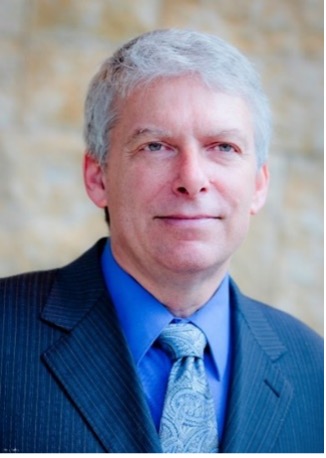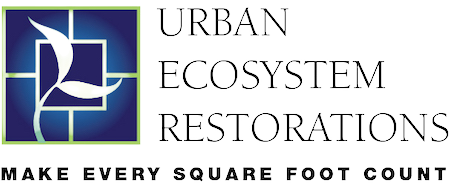Company Spotlight: Greening Urban, LLC
Chris Earley, Interview 7/26/24

Greening Urban, LLC is a civil engineering firm based in Washington, DC that integrates sustainability, using innovative technology, green infrastructure, and neighborhood design, into every project. The firm seeks to add value at each stage of the project development process, from pre-planning through design and final project construction. Greening Urban is unique in that it combines deep civil engineering, permitting and survey experience with sustainability expertise. Greening Urban serves commercial real estate developers, local governments, home owners, and nonprofit organizations on projects of any scale. This includes single family residential, multi family residential, individual commercial buildings, mixed use, and master plans. UER Board member David Rouse recently spoke with Chris Earley, Greening Urban principal (and fellow UER Board member) to learn more about the firm and its approach to sustainability. Company website: www.greeningurban.com.
Editorial note: The following has been edited for clarity and conciseness.
David: What motivated you to start Greening Urban, LLC? What sets the firm apart?
Chris: When I founded Greening Urban in 2007, sustainability was not on the radar screen of developers and engineers. At the same time, most architects, planners, landscape architects, and other professionals who were interested in sustainability did not understand how to make sustainable practices work on the ground, in real projects. What sets the firm apart is that our work addresses what I see as a critical gap by tying together sustainability and project implementation. We understand what it takes to make a visionary plan become reality, through engineering design, permitting, construction management, and the like.
David: What’s your definition of a sustainable project?
Chris: A sustainable project is one that can be built and maintained over time. More broadly, a sustainable project minimizes resource use, avoids negative impacts, and improves environmental quality. While our work focuses on stormwater management and green infrastructure to achieve these goals, we work with project partners to leverage additional “triple bottom line” benefits. For example, Bass Circle Apartments is an affordable housing development in DC. Greening Urban worked with the design team, developer and DC government to incorporate 65 rain gardens totaling about 7,000 square feet dispersed throughout the 3.2 acre (141,000 square feet) site. This keeps stormwater onsite while creating a beautiful landscape for residents – at a lower cost than a conventional engineering solution that was used on a similar project nearby.

David: What are some of the barriers to sustainable development projects? How can these barriers be overcome?
Chris: First is the need to demonstrate the worth of green, sustainable practices in the market. I spend a lot of time thinking about how to have developers incorporate these practices into their projects. Traditionally, even when they’re open to them, they have been hard to justify from the standpoint of financial feasibility, and even more difficult to navigate through the regulatory system. These barriers are slowly lowering as sustainability practices are getting more available in the marketplace and regulations are somewhat catching up. The second barrier is that engineers and other disciplines operate in silos, and this can be one of the biggest barriers to integrating sustainability into the whole project. Since project integration is the best way to get cost savings while maximizing green benefits on all scale projects, this barrier can be the most difficult to overcome.
I think that partnerships and collaboration across disciplines and sectors are key to overcoming both these barriers. For example, Greening Urban worked with the planning group at SmithGroup as prime and HR&A Advisors as market economists, on the Eisenhower West Small Area Plan in Alexandria (VA). This plan sets a framework for sustainable development of the 620-acre study area over a 25-year period that is grounded in market and project feasibility. Greening Urban developed a stormwater management plan for the overall area that uses a green infrastructure network to manage runoff naturally. Editorial note: The Eisenhower West Small Area Plan received the Sustainable Urban Design Project award from the American Planning Association’s Sustainable Communities Division in 2016.
David: You’ve mentioned a couple of projects Greening Urban has been involved in that incorporate sustainable development practices. Could you highlight one or two others?
Chris: One that comes to mind is The Green at Parkside, which is a great example of a public-private partnership to implement green infrastructure. Greening Urban’s client City Interests, a private developer that has done a lot of work in the Parkside neighborhood, partnered with the District Department of the Environment to create a one-acre community park that serves the surrounding development. The park incorporates bioretention areas and other innovative technologies to retain runoff on site. Groundworks Anacostia River DC, a local nonprofit, facilitated job training for neighborhood residents to install the project’s permeable pavers.

David: Chris, thank you for an interesting and informative interview. Do you have any thoughts you’d like to leave us with?
Chris: The design and construction industries – including engineering – have contributed greatly to global warming and its effects, which are so important to address. There’s been a great deal of progress since I started Greening Urban, including growing acceptance of sustainability programs like LEED, Sustainable Sites, and WELL Building. Even with these programs, most projects that are built every day don’t address sustainability or they have proposed sustainable features “value-engineered” out of them. Those that do apply sustainability standards happen on a site-by-site, project-by-project basis, making it very difficult to scale up their benefits. The Green at Parkside and the Eisenhower West Small Area Plan are noteworthy because they do exactly that – the former at the scale of a neighborhood and the latter at the scale as part of a large, mixed-use district. We’ll need a lot more of this type of thinking – at scales from site to city, region, and beyond – if we’re going to have a meaningful impact on climate change. That’s why I find Urban Ecosystem Restorations’ idea of integrating nature into urban and suburban landscapes through Eco-Functioning Spaces® so powerful.

